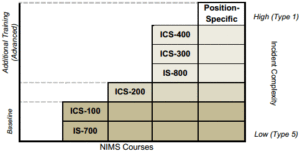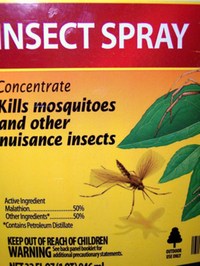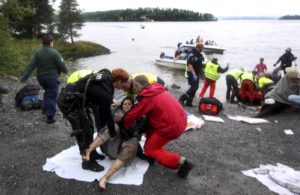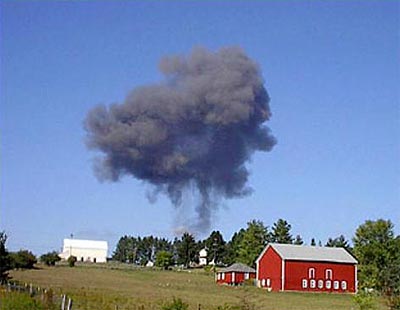Recommendation Number 1 – Gain Proficiency in Using the Incident Command System
It amazes me when I still see failure to use Unified Command when obviously called for such as in the Pulse shooting. Why did we not learn this lesson in 1999 after Columbine? National Incident Management System (NIMS) compliance requires more than just lip service. Ensure staff who will fill key roles on your Incident Management Team (IMT) have regular ongoing training in actually using the Incident Command System (ICS). This includes working with other disciplines on a regular basis to practice Unified Command for major events. Just because you have a good working relationship between police, fire and EMS at a motor accident scene does not translate to working well together at incident management during a more complex and less frequent event.
Identify staff for ICS positions based upon their existing job duties, shift assignments and personalities. Find people well suited to the different positions and enable them to blossom in their roles through additional training, mentoring and practice. Keep in mind you need a team to manage an event. Don’t think plugging in random individuals at the time will yield good results.
ICS course recommendations are based off of an organization’s risk for varying level events (NIMS Event Types 1-5). Even small organizations at risk for a major event require higher level training since they will need to work with other agencies and government support.  If time is an issue for the full ICS 300 and ICS 400 courses, work with a consultant you trust to build a block of training you can support. This will help ensure staff have the key knowledge, skills and abilities necessary for incident management within your organization.
If time is an issue for the full ICS 300 and ICS 400 courses, work with a consultant you trust to build a block of training you can support. This will help ensure staff have the key knowledge, skills and abilities necessary for incident management within your organization.
Conduct quarterly scenario-based (pulled from your HVA) drills on all shifts designed to ensure IMT activation. Make sure your IMTs builds realistic organizational structures designed to manage the event. Pretending you have resources or personnel you’re not likely to have is a recipe for disaster in real-life.
 Your IMT should draft their Initial Incident Action Plan (IAP). I suggest you develop your own quick start IAP form. I’m happy to email you mine to help you get started, just ask. Make sure the IAP identifies the first operational period length, includes S.M.A.R.T. objectives and has an organizational chart. IAPs can be reviewed by other teams from other shifts to help everyone learn from each other.
Your IMT should draft their Initial Incident Action Plan (IAP). I suggest you develop your own quick start IAP form. I’m happy to email you mine to help you get started, just ask. Make sure the IAP identifies the first operational period length, includes S.M.A.R.T. objectives and has an organizational chart. IAPs can be reviewed by other teams from other shifts to help everyone learn from each other.
Stay out of the weeds and operational tactics. Your personnel know how to respond operationally. Practice establishing incident management, not response. Drills like this can be short and take up no more than 30 minutes. If your management team can’t get their IAP developed within 30 minutes, operational staff will free-lance to address issues as best they can in the absence of leadership. Good incident management during major events will ensure wise resource allocation which helps ensure the best possible outcomes while at the same time limiting organizational disruption and costs.
Recommendation Number 2 – Decrease Fear and Increase Respect for Unusual Threats
Seek jurisdiction specific education and training on the unconventional threats of chemical, biological, radiological, firearms and explosives. Not only do each of these represent a unique threat to your staff and patients they have an added edge of fear associated with them. Fear is a powerful motivator and for those in public safety and healthcare it can cause poor decisions. If you disagree, sign up for one of my courses and ask for the “snake” addition. Once people understand the real risks from unusual threats, they are better prepared to survive the encounter and deal with the consequences in a safe and timely manner.
Unusual threats exist in some form or fashion in communities across the country. When seeking training make sure your instructor makes the class content relevant to your jurisdiction. GB and VX are interesting nerve agents to learn about, but don’t exist in most locations.  Organophosphate pesticides are almost universally found and available over the counter. While they might behave similarly, there are differences in risk to your staff and emergency treatment.
Organophosphate pesticides are almost universally found and available over the counter. While they might behave similarly, there are differences in risk to your staff and emergency treatment.
Ebola does not need to be on everyone’s list of biologic agents to worry about. Norovirus on the other hand is a bad actor (contagious and harder to kill than the Ebola virus) everyone should be aware of. Lots of phobia associated with radiation but knowledge and timely use of detection equipment makes it fairly simple to mount a safe response.
I am not too concerned about explosive devices although medical personnel do need to know how to assess the potential for blast injury and treat properly. Firearms on the other hand represent what appears to be a growing indiscriminate threat. 
The 2011 attack in Norway by one person included a bomb which killed 8 and firearms which killed 69. While the probability is low for any one organization, we know more events will happen somewhere. Perhaps at your organization while you read this post. Your preparedness can be broken down into two phases. The first is a reaction phase to the sound of gunfire or violent confrontation. Statistically 70% are over in 5 minutes or less and before police arrive. Your staff must immediately decide – run – hide- fight. This represents life safety for them. Don’t develop rigid policies for this phase as different people will react differently.
The second phase is your response to the aftermath. How will you quickly triage and treat those with life threatening injuries? One of the most important tools at this point is access to a good tourniquet and knowing how to apply it. During this second phase, your staff may very well save the life of someone they know.
We really can do emergency preparedness better. I think these two areas should be the focus in 2018. What are your ideas?




Leave A Comment